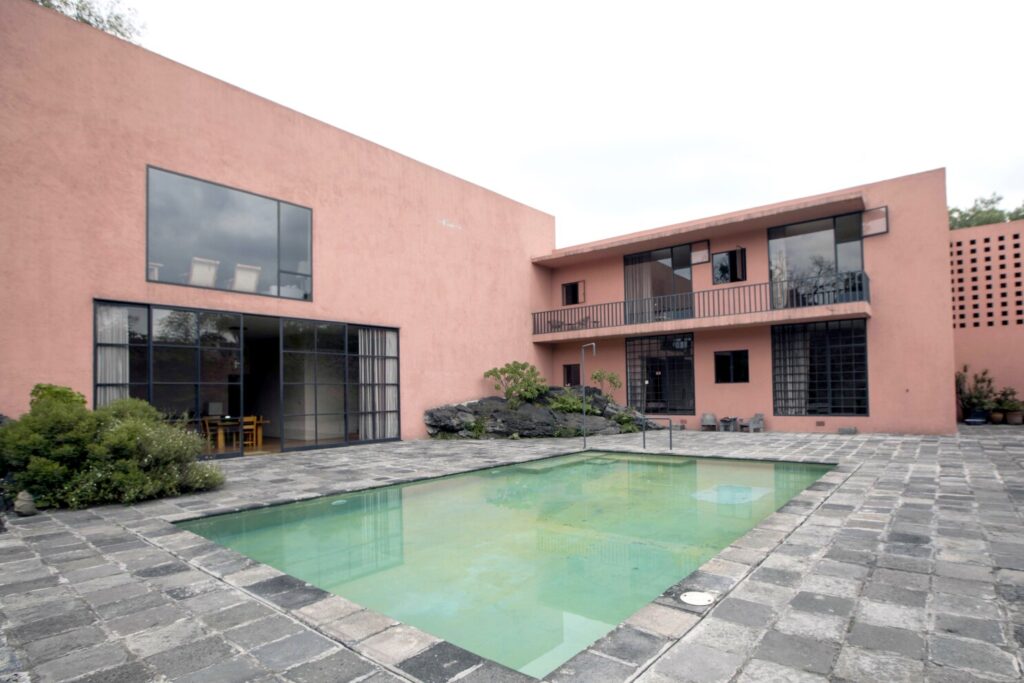The residence and studio of Luis Barragán are located on two neighbouring lots on General Francisco Ramrez Street, numbers 12 and 14, in the Daniel Garza neighbourhood of Mexico City. This twin deal’s façades create a single unit towards southeast.
One of the earliest announcements of the building’s manifesto is the choice to build the home on a little street in the historic Tacubaya middle class community. Given the demands of urban growth, this popular area is currently struggling to maintain some of its unique characteristics.
The neighborhood
This area was made up of small, basic dwellings, mainly vecindades, a classic Mexican housing pattern. Workshops, super markets, building supply wholesalers, and tiny local eateries enhance the house-surrounding backdrop.
The surroundings
The mansion was built at the very same moment that Barragán was finishing the first phase of Jardines del Pedregal, one of most famous housing project for the wealthy in Mexico City’s existence. It’s noteworthy that the very same designer who created it chose to construct his personal home on Tacubaya rather than El Pedregal, perhaps as a testament to the urban principles nearest to his heart.
The house’s primary front is oriented with the street, preserving the look of the surrounding structures. It’s a colossal barrier with exact apertures. Except for its magnitude, which contrasts with the remainder of the area’s structures, the home would virtually go undetected owing to it’s own minimalist, nearly incomplete appearance.
The characteristics of the design
The house declares that it is the home of an artist, but its elements also tell of a contemplative and private character, ironically modest and purposefully nameless.
The solitary object extending over the level of the front is the transparent, shuttered open circulatory reading window. Just the pedestrians and car entry doors, as well as the glass metal work, are coated, preserving the colour and inherent texture of the poured concrete.
The upper left corner of the exterior combines with two axes that create an edge: yellow with orange, throughout this manner. Lastly, the white tower that serves like a water storage tops the house’s appearance across the skies.
The water tower, a similar gesture, may be seen at Francisco Ramrez 20. The shape of the exterior and the protrusion of the centre windows with in arrangement are both shared by the home on the left side. As previously indicated, any timeline of Luis Barragán’s home and shop must come to a halt in the house next door, which can undoubtedly be regarded the first test prototype or the early stage of a plan that proceeds in its adjacent lots. The proximity of two works that are tightly connected by the very same artistic method is a unique example in the history of contemporary architecture.
Throughout Luis Barragán’s life, the north entrance, labeled with number 12, had been his workshop. The profile of the front, which is regarded as a structure of lower height, distinguishes it. The number 14 leads to the architect’s residence.
“Check out our hyperlink Travel Planners“


